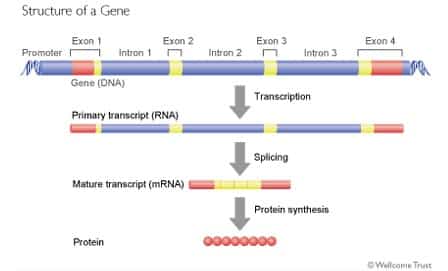Introns have been called "junk DNA" but the fact that they are so prevalent and and have been preserved during evolution leads researchers to believe that introns serve some function.
Some researchers have proposed that introns serve as a mechanism that selects for genes that will be expressed early during the development of an organism. There has not been much experimentation to support this hypothesis so its plausibility is uncertain.
Sandro J. de Souza, who works in Walter Gilbert's laboratory at Harvard University, expanded on the prevailing intron hypothesis. There are at least five different types of introns. Some are ribozymes. Some of these ribozymes can splice themselves out of the original transcript. The most common type of intron is called a spliceosomal or nuclear intron.This type of intron is the one found in the nuclear genes of humans.
Generally, nuclear introns are ubiquitous in complex eukaryotes. However, simple prokaryotes and eukaryotes lack introns. In complex multicellular organisms, introns are about ten times longer than the exons. The sequence and length of introns vary rapidly over evolutionary time.
Introns do sometimes have identifiable functions. Scientists have found examples of "functional nuclear introns" that can accommodate sequences important for the expression of the gene on which the intron resides. This function is not a common feature of introns, though. There are also cases in which introns contain genes for small nuclear RNA. Nuclear introns can also be important in alternative splicing, which produces multiple types of messenger RNA from a single gene. Although these examples demonstrate roles for introns, they do not explain why introns are so ubiquitous in our genes.

No comments:
Post a Comment